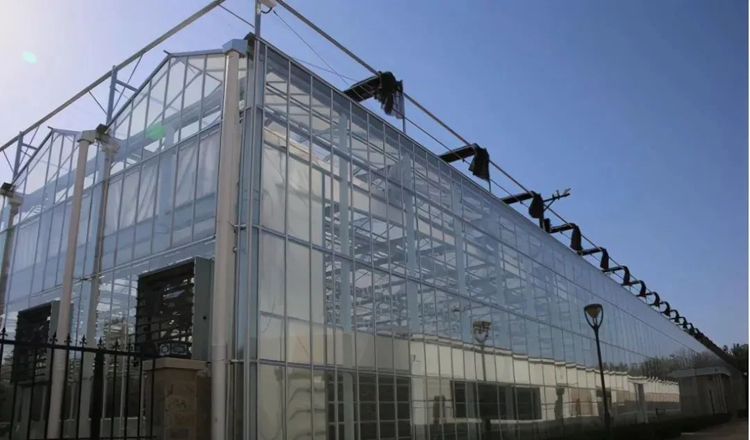Greenhouses and awnings
Greenhouses use light-transmitting covering materials (mainly plastic or glass) to allow short-wave solar radiation to enter the greenhouse to increase the temperature and temperature in the room and convert it into long-wave radiation. The accumulation of heat increases the indoor temperature. This process is called the "greenhouse effect".
Modern greenhouses can not only transform temperature conditions, but also use high-tech technology to create a greenhouse microclimate that is conducive to crop growth and development. Use technology to automatically control and adjust various environmental factors in the greenhouse, including temperature, light, humidity, CO2 concentration, etc., according to the growth habits of the produced crops and the needs of the market, partly or even completely get rid of the constraints of the natural environment, and artificially create A suitable environment for crop growth to produce high-quality, high-yield products.
The yin-yang solar greenhouse is on the north side of the traditional solar greenhouse, borrowing (or sharing) its back wall, and adding a greenhouse of the same length but with the daylighting surface facing north, and the two together form a yin-yang solar greenhouse. In summer, the shade shed can cool the sun shed. In winter, the shade shed prevents the back wall from directly facing the wind and snow, reduces the heat loss of the back wall of the sun shed, and is beneficial to increase the temperature of the sun shed. At the same time, the thermal insulation of the shade shed is poor, and it is suitable for the production of crops that are resistant to low temperature or shade (such as edible fungi, etc.). Generally, ventilation windows are set on the upper and lower parts of the shared wall of the yin and yang sheds, and air circulation is carried out between the yin and yang sheds to achieve the purpose of energy and material exchange.
This method of yin and yang shed has outstanding advantages:
1. Cost saving
The two sheds of the double-sided solar greenhouse share one wall. Under the premise of the same temperature requirements, the thickness of the back wall of the sun shed can be reduced in construction, and the engineering cost of the greenhouse construction can be reduced. And the sun greenhouse can reach the normal growth temperature in winter with the help of the shade greenhouse space, which is almost half the cost of building the same sun shed.
2. Effectively improve land utilization
In this form of greenhouse, the shade shed just makes use of the open space that must be reserved in the layout of the traditional solar greenhouse to ensure the lighting of the solar greenhouse behind, so that the land utilization rate of the solar greenhouse is improved. Due to the shading of the wall, insufficient light, and late thawing, the distance between the sheds in general solar greenhouses is at least 5 meters, so the open space between the 5 meters of sheds is basically in an abandoned state. The construction of the double-sided shed makes full use of the abandoned land at the back of the solar greenhouse. According to calculations, taking a park with 20 greenhouses at 40° north latitude as an example, the use of yin-yang solar greenhouses increases the land utilization rate by 35.4%, increases the greenhouse area by 93%, saves building materials by 50.2%, and reduces the cost by 32% compared with traditional solar greenhouses.
3. Improve economic efficiency and crop quality
The yin and yang sheds rely on each other, and the back wall of the awning can increase the room temperature by 2-3 degrees due to the protection of the yin shed. The shade shed accepts the heat dissipation from the sun shed, and in spring and autumn it can basically meet the temperature requirements of edible fungi and leafy vegetables. In addition, shade sheds can also supplement carbon dioxide for sun shed crops and provide organic gas fertilizer. Therefore, the yield and quality of the shade shed crops have been greatly improved.








